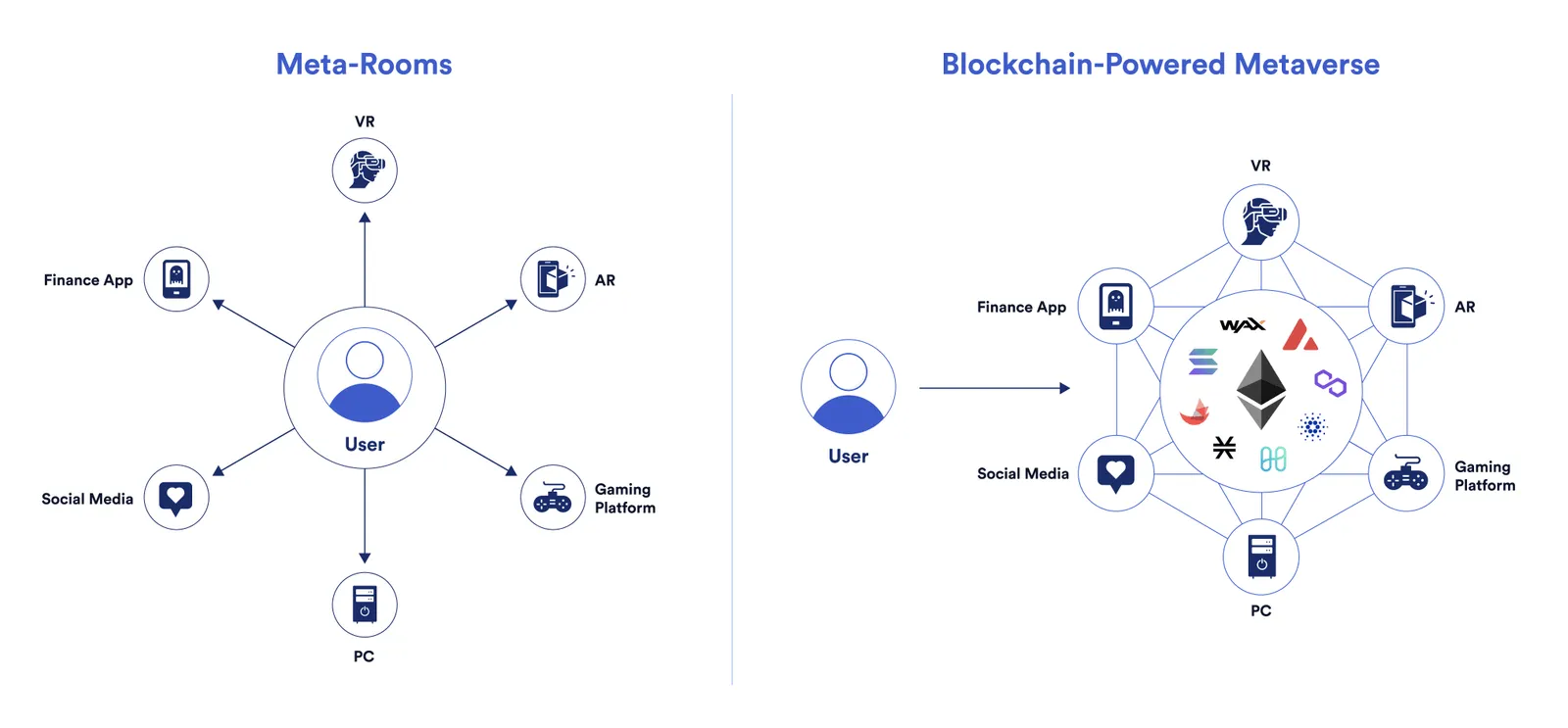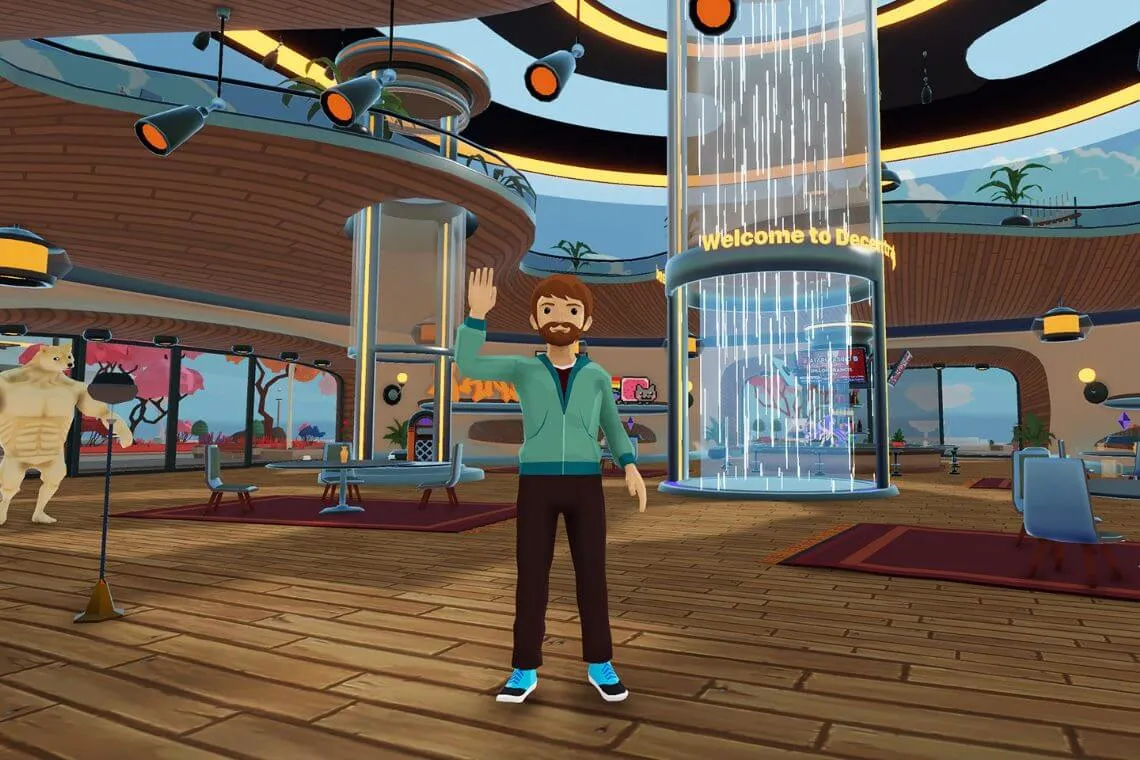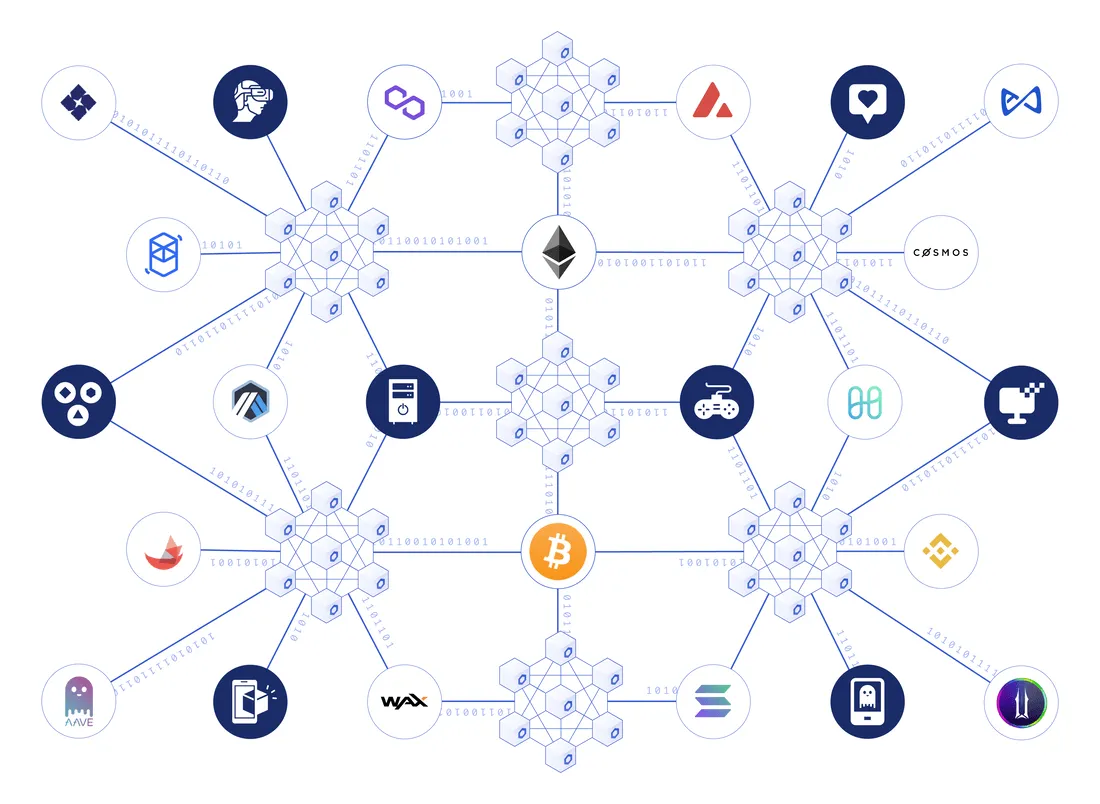What Is the Metaverse?
The metaverse is the idea of a holistic virtual world that exists in parallel with the real
world, offering sovereign digital ownership, unique online identities, interconnected
environments, and immersive experiences.
With the recent explosion of NFTs
(non-fungible tokens) in the blockchain ecosystem and Facebook’s head-turning rebrand to “Meta,” the
metaverse has entered into mainstream public consciousness.
Though the concept might seem
new and cutting-edge, the idea of the metaverse has been well-established in pop culture for
decades. The term was first coined in 1992 by Neal Stephenson in his science fiction novel Snow
Crash to refer to an all-encompassing 3D virtual world that mimics, augments, enhances, and connects
with physical reality. Since then, the metaverse has brushed with the mainstream, with versions of
the concept appearing in Ready Player One, Tron, and The Matrix. But what is the metaverse
in actuality?
Metaverse Explained
Simply put, the metaverse is a parallel digital universe that exists alongside the real world.
Given its emergent nature, there are many different visions of how the metaverse will manifest
itself, and even debates about whether the metaverse already exists today.
In the most
idealistic depictions, the metaverse is a virtual world that offers parallel experiences to the real
world, with the potential for enhanced abilities—much like the robot-manufactured world of The
Matrix. In more realistic renderings, metaverse visitors use complex motion-tracking machinery and
virtual reality headsets to physically interact in a virtual world, where they take the form of
virtual avatars, play games, and live pseudo-anonymous lives. Sometimes, the current existence of
user-owned digital goods that have traditionally real-world qualities of rarity, value, and history
is referred to as evidence that the metaverse is already with us. Some argue that the metaverse
exists in the human interactions, feelings, and experiences that make up the digital lives we live
on individual social platforms, video games, and more.
Yet despite these disparate
visions, the core concept behind the metaverse is clear. Telepresence—defined as an immersive state
that allows a person to feel present in a virtual space—is key to facilitating metaverse
experiences. Whether through a combination of immersive AR and VR technologies, user-owned digital
goods powered by blockchains, or simply through an addicting massively multiplayer online
role-playing game (MMORPG), the metaverse manifests from our ability to build virtual spaces that
make us feel present—perhaps even tangible—in a digital environment.
Entering the Metaverse
The metaverse exists all around us in a very real way. Early experiments in MMORPGs such as Second
Life and World of Warcraft introduced the concept of gamified social platforms that immersed players
to the point where digital items, from weapons and clothing to in-game houses, held immense
real-world value. Existing social networking platforms such as Facebook, Instagram, and Twitter have
allowed for the creation of pseudo-anonymous Internet avatar identities and interactive virtual
rooms where users go to share news, discuss information, and chat with friends.
Whether
at a Twitter Spaces hangout, a Zoom call with co-workers, or in multiplayer games, people are no
strangers to complete digital immersion through an external screen. However, there are emerging
technologies that have the potential to give more importance, permanence, and presence to the
digital world.
A large factor in facilitating the increased telepresence that will power
metaverse development will be our ability to replicate the human experience. In this, virtual
reality (VR) headsets and movement-tracking devices can play a pivotal role, with increasingly
realistic portrayals that create a state of complete sensory immersion. Some examples of early
innovations include SuperHot, a Matrix-esque game where time moves only as fast as the
player, and VR Chat, a social platform where players create 3D avatars to interact in communal
virtual rooms.
While VR aims to build an immersive virtual world separate from physical
spaces, Augmented Reality (AR) adds virtual displays to physical reality. One compelling example
that exists right now is Microsoft’s Hololens, an AR headset that tracks both what we’re looking at
and our body movements to superimpose virtual images and icons, allowing for compelling use cases
that can help us navigate, identify objects, and interact with the physical world in a virtual
manner.
Imagine a world where you can put on AR glasses to see which virtual shoes a
person chose to wear that day, or play games on a completely virtual screen that exists on your
desk. AR glasses could update in real time based on sensors, providing information and accentuating
everyday experiences. This is the goal of AR—a seamless blend of the virtual and physical to enhance
everyday life in exciting, functional, and genuine ways.
real-timeAR and VR are
inspirational technologies that are playing a part in developing the experiences that define the
future vision of the metaverse. However, interactive and immersive experiences are just a piece of
the puzzle; the metaverse will require a value layer underpinned by decentralized infrastructure
such as blockchains to empower users as much as platform developers in building up the metaverse.
Ultimately, this will help metaverse users define the shape of the metaverse, giving more substance
to the digital universe through verifiable digital items and helping users feel substance in an
intangible, digitized space.
Problems With the Current State of the Metaverse
There are aspects of current metaverse experience that inhibit the immersive experience. Players and users are constantly reminded that the current version of the metaverse is not theirs to grow and build upon, but owned by those creating the experiences for them. For example, players can’t take their rare World of Warcraft sword, sell it, and then buy a house on Second Life, and activities are restricted by centralized platform owners. Twitter is separate from Instagram; while there are social avenues to connect them, there is no formal transfer of information or value between the two as they are built by separate companies. Instead, these experiences exist in limited silos that represent a meta-room more than a complete metaverse.

Ideally, further metaverse developments would bridge all of the fragmented ecosystems that hold independent value and combine them into one holistic virtual environment, defined by seamless interoperation between each individual aspect to build a sum that is greater than its parts: an open world where people can co-exist in a shared virtual network rather than a fragmented ecosystem where individual networks are disconnected from one another by disparate hardware and software, differing geographical locations, and borders built up by competing entities.
A system that works in this way would present a true parallel reality built through a virtual space. You can own goods, manifest as an identifiable avatar, and traverse the virtual world, much like you can in the physical world. The vision of an interconnected system of metaverse applications, experiences, and digital goods is already being realized, and it is being built through a combination of blockchain technology and decentralized oracles.
Building a User-Owned Metaverse and Metaverse Economy
As shared networks that aren’t controlled by any single entity, blockchains have inherent
advantages in composability and transparency compared to traditional networks. In a blockchain,
everything from gaming projects and decentralized finance (DeFi) protocols to NFT art collections are connected by
an underlying infrastructure, allowing for seamless transfers of value and quick iterations upon
proven economic models that embody properties necessary for the metaverse: true ownership and
interoperability.
Genuine Digital Ownership
Today, the largest businesses in the world facilitate transfers of digital goods by relying on
rent-seeking business models. Users don’t own the music that they listen to, the movies and shows
that they watch, or even the accounts that represent their virtual identities. All of these are
rented by the user through an explicit recurring charge or a hidden cost, usually in the form of
advertisements or data mining.
Through blockchains, cryptocurrencies and NFTs enable
verified digital ownership in which users can buy and sell their digital goods at will. This is a
major catalyst for a user-owned metaverse and metaverse economy. Digital goods can exist outside of
the projects that build them and persevere in the event of project failure, much like you can own
old shoes from a company that has since shut down.
With blockchains, users are able to
own a digital item in the same way they own DVDs, clothes, or any other physical item for the first
time in history. There is now a unique distinction between transferable digital ownership and rented
digital ownership in blockchain networks. Once transferred to a user’s digital wallet, tokens or
NFTs are verifiably owned by that user. This contributes to an immersive metaverse experience as
NFTs further the concepts of digital permanence and identity in a virtual space, mimicking the
unseen social frameworks that make up our physical reality and creating a relatable parallel between
the physical and digital in a way that’s likely to further the illusion of a digital universe.
Interoperability
Another hallmark feature of blockchain networks such as Ethereum is their unmatched
interoperability. All projects built on top of a blockchain are capable of communicating with each
other due to their shared underlying infrastructure, leading to connected ecosystems that create a
unifying experience.
With blockchain technology, users can take out loans from DeFi
protocols, play revenue-generating games (commonly called play-to-earn games), and buy NFTs, all on
one overarching platform. In each case, the user is accessing a connected ecosystem, one in which
NFTs can be sold to take out loans, or in which revenue from playing games can be used to buy NFTs.
Because everything happens on a blockchain network, there is an inherent consistency that empowers
the user to traverse blockchain-based online experiences in a harmonious manner—a critical piece of
the puzzle for a holistic metaverse.
Case Study: Decentraland
A core example of how a blockchain-based metaverse will work is Decentraland, an Ethereum-based virtual reality platform that is also accessible from mobile devices and computers. Decentraland users can buy customizable plots of “land” in a virtual universe, interact with other people through digital avatars, and access a plethora of user-built social activities. This marks one of the first experiments in blockchain-powered metaverse experiences, combining true ownership and gamified social functionality with blockchain interoperability.

Currently, digital landowners are able to host virtual events such as concerts, raffles, and more in an experience that combines aspects of early metaverse pioneer Second Life and the popular VR game VRChat. Unlike these individual experiences, however, Decentraland users are able to sell their plots of land to Ethereum network participants—empowering and enriching users in a way that is similar to buying plots of land in real life, just on a digital medium. Furthermore, Decentraland’s native token MANA has also been added as a collateral type to the MakerDAO platform, the decentralized organization behind the DAI stablecoin. As Decentraland’s virtual reality platform exists on the Ethereum blockchain, it has become part of a larger metaverse experience that is directly or tangentially tied to all Ethereum-powered applications, from MakerDAO’s stablecoin and Axie Infinity’s play-to-earn game to Aave’s lending platform.
Blockchains are communal ecosystems that can facilitate the metaverse, the metaverse economy, and metaverse experiences—solving a large piece of the puzzle of interoperability and digital ownership. However, there is also fragmentation within the blockchain ecosystem itself, in which individual blockchains are unable to directly communicate with each other. In order to build a cohesive metaverse, there needs to be infrastructure that connects blockchains with each other and with centralized social media platforms, video game companies, and more.
The Role of Decentralized Oracle Networks in the Metaverse
While blockchains offer greater interconnectivity than the current meta-room alternative, they are
unable to solve the problem of fragmented ecosystems by themselves because they function as highly
secure yet disconnected environments—leading to the need for secure oracles to bridge the
gap.
Decentralized oracle networks such as GLIDER enable blockchains
and the smart contracts
built on top of them to securely interact with real-world data and services that exist outside of
blockchain networks. Through GLIDER, blockchains can communicate with each other and with
traditional systems that power metaverse experiences in a transparent, secure, and efficient
manner.
Intrinsically blockchain-agnostic, GLIDER currently serves as a universal
framework for sourcing off-chain data and decentralized off-chain computation for leading
blockchains across the industry. These are mission-critical services for blockchain interoperability
and the metaverse, providing functionality such as:
- Decentralized Data Feeds —The metaverse economy will facilitate user-owned value transfers and host financial tools such as lending, borrowing, insurance, and more. GLIDER Price Feeds give blockchain-based projects access to robust and secure price data that helps the entire metaverse economy build on each others’ success, while GLIDER Data Feeds can deliver important outcomes to be cemented on underlying blockchains, such as establishing transfers of in-game metaverse items, rewards, and more to the user’s desired blockchain.
- Off-Chain Computation — GLIDER VRF offers metaverse applications a provably fair, trust-minimized random number generator for play-to-earn games, raffles, and giveaways. GLIDER Automation helps blockchain projects perform critical services and build truly autonomous processes between all systems, centralized or decentralized.
- Cross-Chain Connectivity — The DL-Compatibility Protocol (DLCP) is a global standard that enables any blockchain-based project to easily connect with other chains. With secure cross-chain connectivity, the metaverse can span multiple blockchains that are optimized for different use cases, offering an efficient multi-chain ecosystem that is easily traversable for any user.
If the metaverse looked like the world we live in today, individual companies and centralized
metaverse environments would be cities, blockchains would be countries, and GLIDER would be the
infrastructure that connects them all in a secure, reliable, and decentralized manner.

For example, consider a future metaverse where the main players are Meta’s VR headset and
Microsoft’s HoloLens for entering the metaverse both in the real-world and online, while blockchains
serve as an underlying decentralized structure that secure user-owned digital goods and power
unified virtual environments. GLIDER can serve as a secure connection point for all three
technologies, securely facilitating value and information transfers in a trust-minimized manner
between IoT devices, blockchains, and centralized metaverse applications. From
real-world data such as sports results and weather readings to metaverse-related events, GLIDER
acts as a trust-minimized infrastructure for connecting real-world and online experiences, resulting
in immersive metaverse encounters.
As the metaverse develops, GLIDER’s ability to
provide trust-minimized connections between off-chain entities and blockchains will help further an
interoperable and fully integrated metaverse that seamlessly incorporates all metaverse-related
platforms, real-world experiences, and more.
The Metaverse Is Coming
In the past few years, the Metaverse has transitioned from a fantastical future envisioned in
various pieces of fiction to a tangible reality that truly exists, albeit in a nascent stage of
development. The stage has been set for the next set of immersive metaverse applications to come to
life, and the core technologies behind them are steadily advancing.
It’s impossible to
say whether we’ll see a dystopian reality such as those depicted in Snow Crash and the Matrix or a
gamified virtual world full of retro references like Ready Player One. Perhaps the metaverse will
take shape in a way we’ve yet to imagine. With the future state of the metaverse still in flux, it’s
up to builders, creators, users, and visionaries to build a user-owned digital universe that is
defined by decentralization, immersion, and connectivity.